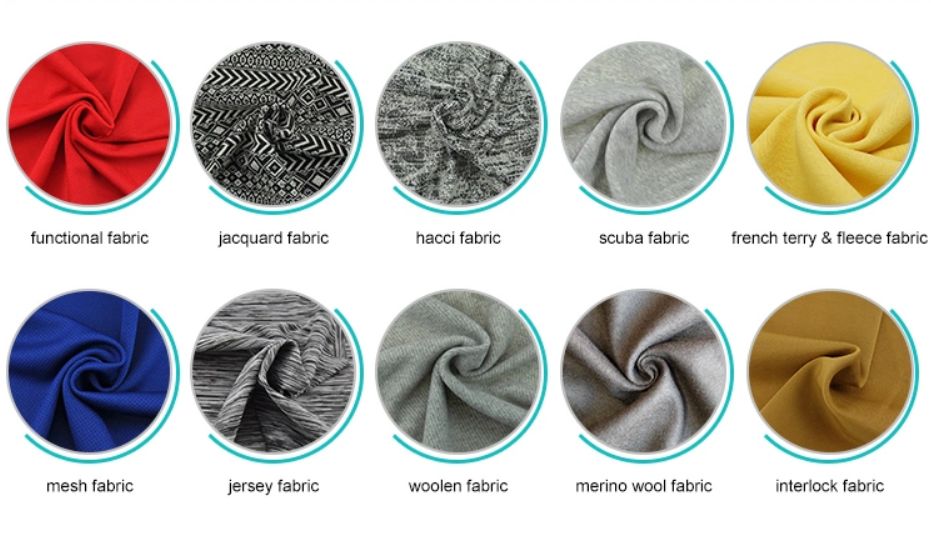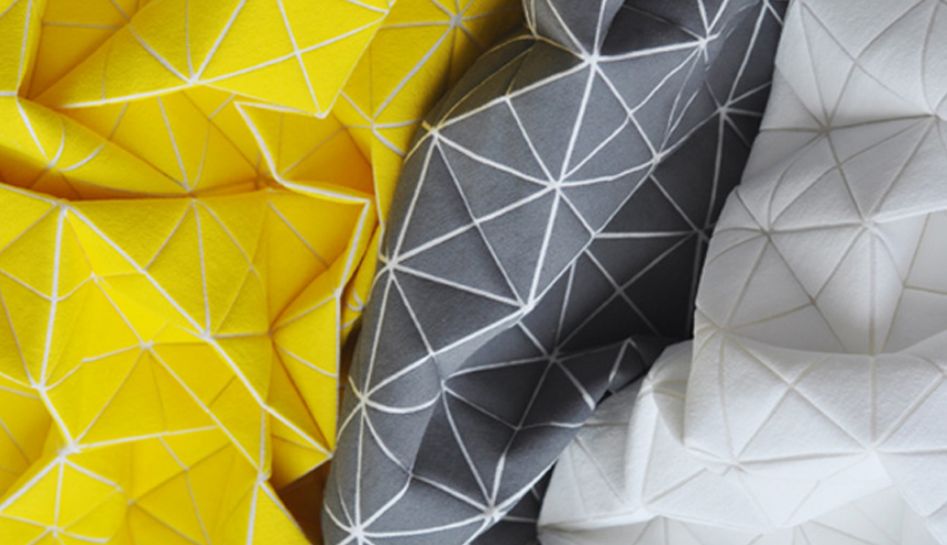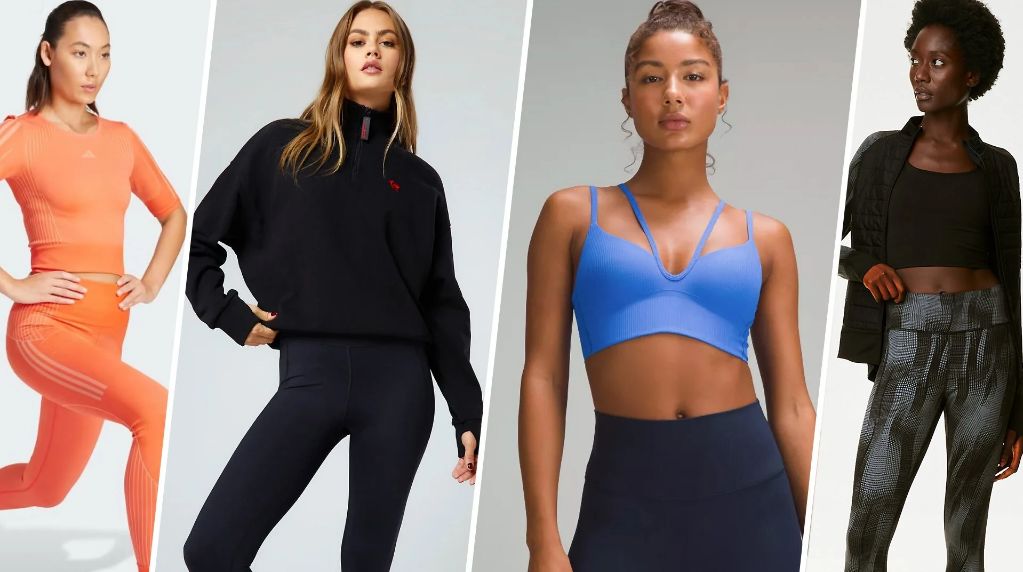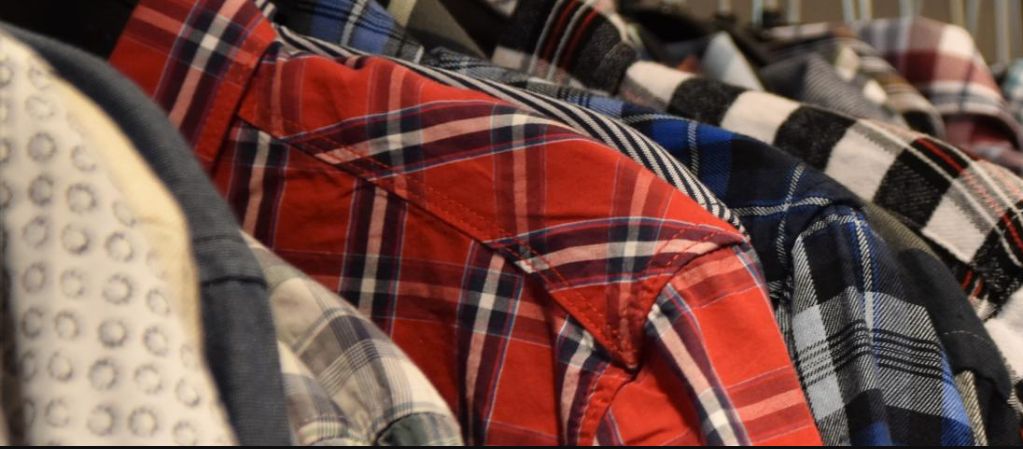In fitness fashion, a new star emerges: recycled active wear. This blog navigates through its evolving trends, unveiling the blend of sustainability and style. Our journey delves into the fabrics' rebirth, the design innovations, and the impact on our planet.
Recycled becomes chic, eco-friendly meets trendy. Let's unravel the story of these garments, reborn from what once was; now stepping into the limelight of gym wardrobes.

In activewear, a seismic shift occurred with the introduction of recycled materials. Early 2000s, a whisper in the industry, began echoing louder. PET bottles, once discarded, found new life as performance fabric. Brands like Patagonia pioneered can blend eco-consciousness with athletic utility.
Fibers spun from ocean-reclaimed plastics broke the mold, setting a new standard. This evolution, though gradual, marked a pivotal junction in textile innovation and environmental stewardship.
The genesis of recycled fibers sparked a revolution in activewear's fabric landscape. Initially, recycled polyester (rPET) emerged, upcycling PET bottles into wearable tech. Soon, nylon waste joined the fray, diversifying the eco-friendly arsenal. This shift wasn't mere material change; it was a paradigm shift.
Fiber innovation became the heartbeat of sustainable fashion, pulsating through the industry's veins.
Scaling production of recycled activewear was akin to orchestrating a complex symphony. Initially, small batches, bespoke, niche. Gradually, efficiency in recycling technologies grew, fostering larger outputs.
The leap from lab to mass market wasn't easy; it required meticulous engineering and investment. This phase marked a transition from concept to ubiquity, propelling recycled activewear into mainstream consciousness.
The tide of consumer awareness swelled, buoyed by growing environmental concerns. Marketing campaigns once focused on performance, now heralded sustainability.
This awareness wasn't spontaneous; it was cultivated through education and visibility. As consumers' appetite for eco-friendly options surged, so did the demand for recycled activewear. This shift wasn't just about fashion; it was a lifestyle statement.
Sustainability goals in activewear became benchmarks, not mere aspirations. Brands set ambitious targets: zero waste, carbon neutrality, and 100% recycled materials.
These weren't just lofty ideals; they were strategic, actionable plans. Compliance with global standards like the Global Recycled Standard (GRS) became a badge of honor. This era marked a commitment to planet over profit, a testament to the industry's maturity.
Forging global partnerships was crucial in elevating recycled activewear's reach. Collaborations spanned continents, from European fabric mills to Asian manufacturers. These partnerships weren't just business ventures; they were alliances for a greener future.
Through these collaborations, recycled activewear found its way across borders, making sustainability a universal language. This global network was the linchpin in the widespread adoption of eco-friendly practices in activewear.

Echoing the realm of sustainable fashion, R-PET (Recycled Polyethylene Terephthalate) emerges as a vanguard. In activewear, its genesis traces back to discarded plastic bottles, transformed through complex processing. Remarkably, one yoga pant equals ≈25 plastic bottles.
Intricacies lie in fiber extraction, where PET undergoes meticulous depolymerization. The end product is Durable, lightweight fabrics, ideal for customized sportswear's demanding dynamics. R-PET redefines eco-efficiency, marrying environmental stewardship with athletic pragmatism.
Repurposed nylon, often dubbed r-Nylon, begins its journey in discarded fishing nets and fabric scraps. An intriguing alchemy transforms these remnants into high-grade nylon. Astoundingly, ≈70 meters of r-Nylon yarn spawn from a single fishing net.
The process, an intricate dance of purification and remelting, imbues resilience. R-Nylon’s forte is Exceptional elasticity and strength, quintessential for high-impact sports yoga apparel. Repurposed nylon intertwines sustainability with athletic resilience, crafting a narrative of regeneration.
In the tapestry of sustainable activewear, upcycled cotton and natural fibers play a pivotal role. Cotton, rescued from textile waste, undergoes a rejuvenation process, emerging as upcycled cotton. Similarly, other natural fibers, like bamboo and hemp, find new life.
The transformation involves rigorous sorting, cleaning, and re-spinning. Astonishingly, one upcycled T-shirt saves ≈2,700 liters of water. Comfort blends with eco-consciousness, offering a tactile and ethical choice for the discerning athlete.
|
Material Type |
Source |
Durability (years) |
Texture |
Water Resistance |
Eco-Friendliness |
|
Recycled Polyester |
PET bottles, garments |
5-10 |
Smooth, lightweight |
High |
Moderate |
|
Repurposed Nylon |
Fishing nets, fabric scraps |
7-12 |
Slightly coarse |
Very High |
High |
|
Upcycled Cotton |
Old clothing, fabric waste |
2-5 |
Soft, breathable |
Low |
Very High |
|
Upcycled Wool |
Post-industrial wool waste |
6-8 |
Warm, slightly itchy |
Moderate |
High |
|
Regenerated Bamboo |
Bamboo cellulose |
4-7 |
Silky, smooth |
Low-Medium |
High |
|
Recycled Elastane |
Industrial waste elastane |
3-6 |
Stretchy, form-fitting |
Low |
Moderate |
|
Tencel Lyocell |
Wood pulp |
5-8 |
Soft, drapable |
Moderate |
Very High |
A Table On Types of Recycled Materials Used in Active Wear!

In recycled activewear, microfibers interlace, crafting a breathable matrix. This fabric, repurposed from PET bottles, excels in moisture management. Air permeability tests reveal impressive results: 5000 g/m²/24h. Heat stress is reduced, as the fabric's unique weave disperses perspiration swiftly.
Wearers report a 'second-skin' feel, owing to the optimal moisture transfer rate. The integration of hydrophobic and hydrophilic fibers elevates this technology. Comfort prevails in diverse climates, a triumph of sustainable innovation.
Recycled yarns transform into robust activewear, defying traditional wear-and-tear. Tensile tests indicate strength of 50 N/mm². Elasticity is not compromised; the fabric extends up to 150% of its original length. Users laud the resilience, even after rigorous activities.
Fiber engineering ensures longevity, a nod to sustainability. This fabric withstands repetitive stretching, a testament to its advanced molecular structure. Eco-consciousness meets high performance, a fusion of necessity and innovation.
UV resistance in recycled fabrics reaches UPF 50+, shielding skin effectively. The integration of titanium dioxide particles enhances this protection. Antimicrobial features arise from embedded silver ions, neutralizing odors. Sun protection remains constant, even after 40 wash cycles.
Wearers bask in outdoor activities, assured of their safeguard against harmful rays. The fabric's antimicrobial prowess is maintained over time, ensuring hygiene. This material heralds a new era in protective activewear, melding safety with environmental responsibility.

In recycled activewear, vibrant hues echo nature's palette. Fabrics, spun from reclaimed PET, boast durability and softness. Organic dyes, free from harmful chemicals, paint these garments in earthy tones. Each piece narrates an eco-tale, blending style with sustainability.
QR codes embedded in tags reveal the garment's origin journey, a digital footprint of environmental stewardship.
Ergonomics reign in recycled activewear's custom design. High-performance textiles, crafted from recycled nylon, offer stretch and breathability. Seamless construction reduces waste, enhancing wearer comfort.
Active seams are intelligently placed, support dynamic movement. Pockets, strategically designed, secure essentials without hindrance. Each outfit is a symphony of function and form, tailored for the eco-conscious athlete.
Recycled high impact activewear embraces universal wearability. Designs incorporate adjustable elements - Velcro straps, elastic bands, modular components. Adaptive features cater to diverse body types, ensuring inclusivity. Fabrics, woven from upcycled cotton, adapt to varying climatic conditions.
Reflective accents, for visibility, merge safety with style. These garments are chameleons, morphing to fit every user's unique needs.
In recycled activewear, color transcends aesthetics. UV-reactive fabrics change hue with sunlight exposure, a playful dance of shades. Thermochromic materials shift colors in response to body heat.
Phosphorescent threads, woven into fabrics, glow in low light, adding a safety layer. Each piece is a canvas of innovation, where color is not just seen but experienced.
Smart technology infuses recycled activewear. Biometric sensors, embedded in fabrics, track health metrics. Solar threads, interwoven, harness energy, powering small devices.
NFC chips, sewn into seams, connect wearers to a digital ecosystem. Haptic feedback mechanisms enhance training, providing real-time tactile guidance. This wear is not just apparel; it's an interface between the wearer and their environment.
Recycled active wear demands rise as eco-awareness escalates. Surveys reveal a 35% preference surge in 2023. Social media buzzes with #EcoActiveWear. Consumer forums echo green trends, resounding with eco-friendly fabric choices. Recycled polyester, a star player, dominates the eco-fabric arena.
Durability tops quality charts in recycled active wear. Tensile strength tests, essential for high-performance gear, are scrutinized. Customers seek tear-resistant fabrics, verified through rigorous stress tests. Breathability and moisture-wicking properties are non-negotiable. UV protection in recycled materials marks a new industry standard.
Digital analytics unveil key insights: Instagram tags for #RecycledWear spike at 50K daily. Influencer collaborations amplify brand reach, resonating with eco-conscious demographics.
User-generated content, featuring recycled gear trials, skyrockets in engagement. SEO optimization, focusing on ‘sustainable activewear,’ becomes pivotal.
In the recycled activewear sector, brand stories resonate deeply. Transparency in sourcing and production fosters trust. Customer retention rates in this niche hover around 60%.
Loyalty programs with a green twist, like recycling old gear, enhance commitment. A brand's eco-ethics now directly influence consumer allegiance.
Global markets for recycled activewear show exponential growth, especially in Europe and Asia. Trade shows spotlighting sustainable fabrics draw international attention.
Collaboration with environmental NGOs opens new market avenues. Adaptation to regional eco-trends becomes crucial for global brand presence. Sustainable supply chains are key in tapping emerging markets.
In recycled activewear's realm, transparency reigns supreme. Manufacturers disclose supply chain stages, from fiber creation to final stitching. They embrace QR codes, linking to detailed reports. Each garment boasts a tag: Spun from 50% ocean-reclaimed plastics, 50% recycled polyester.
Supply chains, audited by third-party entities, ensure ethical sourcing. Consumers, empowered by information, make conscious choices. This transparency fosters trust, a cornerstone in sustainable fashion.
Labor ethics in recycled activewear: a paramount concern. Fair wages and safe conditions are non-negotiable. Brands like R-Tex (fictitious) lead, employing ISO 26000 for social responsibility. Their workshops, monitored via real-time digital feeds, ensure compliance.
Employee testimonials, shared online, reflect job satisfaction and ethical treatment. This sector, though competitive, upholds human dignity above profits. The result: a workforce motivated, producing quality, ethical wear.
Recycled activewear: a champion in waste reduction. Each piece, a mosaic of discarded fabrics and PET bottles, tells a sustainability story. Production lines in these factories are redesigned for minimal offcuts.
Water usage, meticulously measured, drops by 30 liters per garment. Unsold items are repurposed, not discarded. This industry's mantra: Every thread counts. Their commitment to waste reduction reshapes fashion's environmental impact.
In the quest for energy efficiency, recycled activewear manufacturers innovate relentlessly. Solar panels adorn factory roofs, harnessing nature's power. LED lighting and energy-efficient machinery reduce consumption by 40%. Smart sensors regulate factory environments, optimizing energy use.
These brands invest in R&D, discovering new energy-saving techniques. The result: a significant drop in carbon footprint, setting an eco-friendly benchmark for others to follow.
Eco packaging in recycled activewear: an art form. Each parcel, crafted from biodegradable materials, whispers a green promise. Packaging inks, soy-based, harm neither Earth nor skin. QR codes replace bulky manuals, reducing paper use. Packaging sizes are optimized, eliminating unnecessary waste.
This industry's packaging revolution: small in size, monumental in environmental impact. Eco-packaging, once an afterthought, now leads the charge in sustainability.
In eco-friendly fashion, alliances are the fabric weaving success. Recycled activewear thrives through industry collaborations. Textile giants unite, integrating polyester fibers from discarded bottles.
Innovative processes transform waste into wearable art. This synergy drives sustainable fashion forward. Garment life cycles extend, reducing landfill deposits. The fusion of traditional craftsmanship and green technology births eco-chic apparel.
Tech infuses recycled activewear with unparalleled efficiency. Advanced machinery sorts and cleans post-consumer plastics. Precision algorithms predict fabric needs, optimizing resource use.
The integration of RFID tags in garments enhances recyclability tracking. Smart fabrics emerge, blending comfort with environmental responsibility. These tech marvels revolutionize the recycled activewear landscape, setting new eco-standards.
Eco campaigns amplify the recycled active wear narrative. High-impact visuals showcase the transformation of trash to trend. Celebrities don recycled ensembles, sparking global conversations.
Social media platforms buzz with #EcoWear trends. Interactive installations reveal the journey from bottle to bodysuit. These campaigns educate, inspire, and mobilize consumers towards sustainable choices.
Research propels recycled active wear into new realms. Universities and companies co-explore fabric innovations. Biodegradable elastane prototypes promise future compostability.
Life cycle assessments refine production methodologies. Wear-testing ensures durability meets eco-standards. These research ventures continually redefine the boundaries of recycled activewear, blending science with sustainability.
Community engagement roots recycled active wear in real-world impact. Workshops teach the value of recycling and upcycling. Local initiatives collect athletic wear for repurposing.
Collaborations with artists transform old garments into public art. School programs ignite youth interest in sustainable fashion. This outreach solidifies the bond between community, environment, and industry.

In the recycled activewear, cost factors loom large. High-quality recycled materials (like rPET) demand premium prices. Manufacturing complexities escalate costs further.
Brands juggle cost efficiency with sustainability goals. Economies of scale remain elusive for many. Strategic sourcing is key in this sector.
Quality assurance: a Herculean task. Recycled fibers face scrutiny for durability and performance. Consistency in recycled fabric batches challenges producers. Rigorous testing protocols are imperative.
Customers expect top-tier quality, akin to virgin materials. The industry grapples with balancing eco-friendliness and high standards.
Market penetration proves arduous. Consumer awareness is growing, yet remains insufficient. Green marketing strategies are crucial, yet complex.
Competition with established non-recycled brands is fierce. Establishing a loyal customer base requires strategic brand positioning. Innovative marketing tactics are essential to break through market noise.
Innovation: the industry's lifeblood. Consumers and markets constantly seek novel products. The pressure to innovate is relentless. Technology in fabric recycling evolves rapidly.
Staying ahead in design and functionality is paramount. Companies invest heavily in R&D to stay competitive.
Navigating regulatory mazes is challenging. Global standards for recycled content vary widely. Compliance with environmental laws is mandatory and complex.
The EU’s REACH regulations, for instance, are stringent. Adhering to certification processes like GRS adds layers of complexity. Keeping abreast of changing regulations is essential.
Initiate with SEO tactics; target keywords like eco-active wear and recycled fabrics. Collaborate with influencers, focusing on sustainability vloggers. Deploy e-blasts bi-weekly, showcasing recycled activewear's uniqueness. Social media platforms: leverage them for brand visibility.
Diverse content: videos, infographics, blog posts. Engage followers with interactive polls, #EcoFitChallenges.
Craft a narrative around Green Threads, Active Dreams. Highlight the journey from plastic bottles to stylish leggings. Use vivid imagery: Ocean blue leggings, from deep sea plastics. Embrace authenticity; share behind-the-scenes from the recycling process.
Storytelling should evoke emotions; connect with eco-conscious minds. Customer testimonials can be powerful, sharing their green fitness journeys.
Host webinars are on eco-friendly fitness lifestyles. Create a community platform for green fitness enthusiasts. Offer rewards for customer referrals, incentivizing brand ambassadors.
Interactive quizzes on sustainable fashion facts. Personalized emails post-purchase: tips on garment care. Celebrate customer milestones: "1000th recycled tee sold!"
Emphasize the carbon footprint reduction with each purchase. Highlight material origins: Transformed from 5 PET bottles. Educate consumers on the impact of sustainable fashion.
Bold visuals of the recycling process are from bottle to fabric. Share statistics: Each garment saves 3 liters of water. Align messaging with global sustainability events.
Ensure consistent branding across all platforms. Tailored content for each channel: Instagram stories, LinkedIn articles. Optimize website for mobile users; fast, engaging, informative.
In-store displays should echo online messaging, visually enthralling. Keep messaging unified yet platform-specific, engaging diverse audiences.
As our exploration concludes, the future of recycled active wear stands luminous and promising. We've traversed through a landscape where sustainability intertwines with fashion, creating a synergy that's both impactful and stylish. These garments, a testament to innovation, echo our commitment to the planet. They are not just clothes; they are statements.
Now, the path forward beckons - towards conscious choices and stylish strides. Embrace this journey SANSANSPORTS where recycled active wear isn't just a trend, but a lifestyle.
